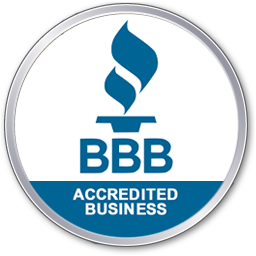If you are considering purchasing or redeveloping property, you may be surprised to discover that you might need a Phase 1 Environmental Site Assessment, also referred to as a Phase 1 ESA. These assessments can help determine any issues with your property that could lead to liability problems for you, the owner, or your lender.
But, what is a Phase 1 ESA? Read on to find out what this assessment is, why you may need one, and how it may protect you.
What Is a Phase 1 ESA?
A Phase 1 ESA, or environmental site assessment, is a visual inspection to identify the recognized environmental conditions, also known as RECs. RECs can affect the value of a particular property. An ESA will also follow an ASTM standard investigating history.
The American Society for Testing and Materials (ASTM), has produced six standards that relate to the operation, classification, and testing of materials used in manufacturing. The standards include test methods, specifications, categorizations, practices, guides, and terminology.
These evaluations will let you know if there have ever been any hazardous or chemical material issues at the property. ESAs are helpful in a real estate transaction because a Phase 1 ESA will help safeguard both the buyer and the seller.
When research on your property is complete, the ESA will outline the property’s present and past use. The current property’s evaluation report will inform you of the potential of the soil or groundwater beneath the building to harm the environment or be a public safety concern.
ESAs can be valuable tools and insurance to shield landowners from the responsibility of previous environmental damages. Every ESA must meet strict All Appropriate Inquiry standards, known as AAI.
Why Should You Get a Phase 1 ESA?
For a successful environmental due diligence procedure, a well-prepared Phase I ESA is a must. Your report will also indicate any concerns the site has had in the past or exists today.
Additionally, all previous uses that might affect the site have a notation in a Phase I ESA. For example, the ecology of land and how a petrol station, dry cleaner, or another form of business impacted the property after using it. Some high-risk usage might harm a property for up to 40 years after the company has left.
In 1980 the Comprehensive Environmental Response Compensation and Liability Act, known as the CERCLA, was established. This followed unregulated contamination events that led to a long list of health cases in communities across the United States. The function of CERCLA ensures that the contaminating party is liable for all cleanup expenses and environmental damage.
In 1986, an amending law known as SARA made it clear that to avoid accountability for any preexisting contamination, buyers must take part in a thorough investigation of the property and its history of pollution. This is what prompted the necessity for an environmental site assessment.
ESAs make sure that any environmental harm gets cleaned up. ESAs also disclose information to prospective buyers, making them aware of what they are entering into.
When Is a Phase 1 ESA Required?
In the course of a real estate transaction, such as the purchase, sale, refinancing, or leasing of real estate, a Phase 1 ESA is necessary as part of the due diligence procedure. Lenders, and sometimes public agencies require a Phase 1 ESA before redeveloping a property.
There may be liability implications for the lender or owner if there are issues found. Additionally, the property’s worth can go down. But, if there is a completed Phase I ESA before the closure of a real estate transaction, it often satisfies CERCLA standards.
An Environmental Site Assessment, or ESA, is often a rule that acts as an insurance policy for potential owners when buying or developing land. An ESA study can determine the likelihood of contamination on your property. The environmental site evaluation will also estimate the chances of environmental contamination in the future.
After CERCLA, the Innocent Landowner Defense was developed to protect landowners who had completed all necessary research into environmental hazards before purchasing the property. The Innocent Landowner Defense safeguards current owners if their property becomes poisoned due to previous ownership and use.
Having an ESA performed is crucial if you want protection for the duration of your property ownership. Limited liability protection and the innocent landowner defense protect the landowner as long as they have:
- During the acquisition, conducted all necessary Phase I inquiries into the property
- Had no ties to the polluting party and were not liable for any contamination
An ESA will shield you from the responsibility of environmental cleanup that occurs while you are the property’s owner. It also protects your partners or lenders.
How Long Is a Phase 1 ESA Good For?
A buyer may have a Phase I ESA from two years ago, but that does not mean that the report remains valid. There is a “shelf life” for Phase I ESAs, even though the information provided in the report is important and useful.
The report’s items are good for one year. Any upcoming real estate transaction would need a current Phase I ESA report or update.
What Is Included in a Phase 1 ESA?
There are several items included in a Phase 1 ESA. They include a review of historical and environmental records from the property and interviews with previous property owners. There is also a visual site inspection.
What Is Not Included in a Phase 1 ESA?
Sampling is not a part of an ESA in Phase I. The Phase I ESA procedure does not involve taking samples of the groundwater, soil, or soil vapor. The Phase I ESA does not sample any particular media, but it does identify the possibility of the release of harmful compounds.
The scope of a Phase I ESA excludes taking into account substances like lead-based paint, asbestos, or mold. But, as an add-on to the Phase I ESA, the environmental consultant can often include a preliminary assessment of the items.
The Phase 1 ESA Process
The Environmental Site Assessment is a process with several items involved. The following are some steps included while a Phase 1 ESA is in the process of being performed:
Phase 1 ESA Checklist
The ESA checklist is part of the Phase I ESA. All items on the checklist must keep you in compliance with CERCLA and AAI standards. The individual for whom the Phase I ESA is being done should complete the Phase I Environmental Site Assessment Checklist.
The ESA checklist is also known as a User Questionnaire. The client’s compliance with the CERCLA All Appropriate Inquiry regulation is ensured by the data they must give. This is the minimal amount of investigation required to meet their obligations and be eligible for landowner liability protection.
The ESA checklist is part of the Phase I ESA. All items on the checklist must keep you in compliance with CERCLA and AAI standards. The evaluation will contain, but is not limited to, the following items:
- Examining old property records
- A review of regulatory environmental records, files, and database reviews
- Research into the use of the land
- Interviews with current and former owners and occupants of the site
- A site inspection
- A review of the site’s current operations and conditions
- Assessment of level 1 vapor encroachment and intrusion
- Identification of RECs, Historical RECs (HRECs), Controlled RECs (CRECs)
- Other circumstances pointing to potential environmental impact and harm
Site Inspection
Your consultant will visit to learn about your property, assess the current conditions, and search for existing or past signs of environmental concerns. These field observations will involve a thorough inspection of both the inside and outside of the property as they search for signs of RECs.
Interviews
To learn more about the use of the property, your consultant will conduct interviews with you as the current owner. They will also speak with former owners, surrounding property owners, and may include government officials.
Records Review
You can expect a review of databases and environmental records through regulatory organizations to find any subterranean storage tanks, current or historical. If known or suspected leaks have occurred at or close to the property, regulatory agencies at the federal, state and local levels will investigate environmental data. The regulatory databases examined will cover subjects like hazardous waste disposal, remediation, cleanups, and underground storage tanks.
Report
In the Phase I ESA report, your environmental consultant will offer their Environmental Professional Opinion. If there is knowledge of known pollution present or believed to be present, at the property, it will be in the report’s conclusions.
Recognized Environmental Conditions, or RECs, will state that known contamination exists or that may do so in the future. This may come from operations on-site or off-site at a nearby location. Described in your report will be any discovered RECs, along with the next steps you must take.
A Phase 1 ESA Can Help You
So, what is a Phase 1 ESA? Many factors determine the success of a real estate deal or property development. A Phase 1 ESA gives you the best historical overview of how your property has been used. It also identifies potential environmental hazards that may limit the property’s potential for future use or put you in legal jeopardy.We are here to help you. Contact us or check out our About Us section for more information. We are an environmental remediation and consulting firm serving residential and commercial clients. We offer over 21 years of service to the greater Portland region.




